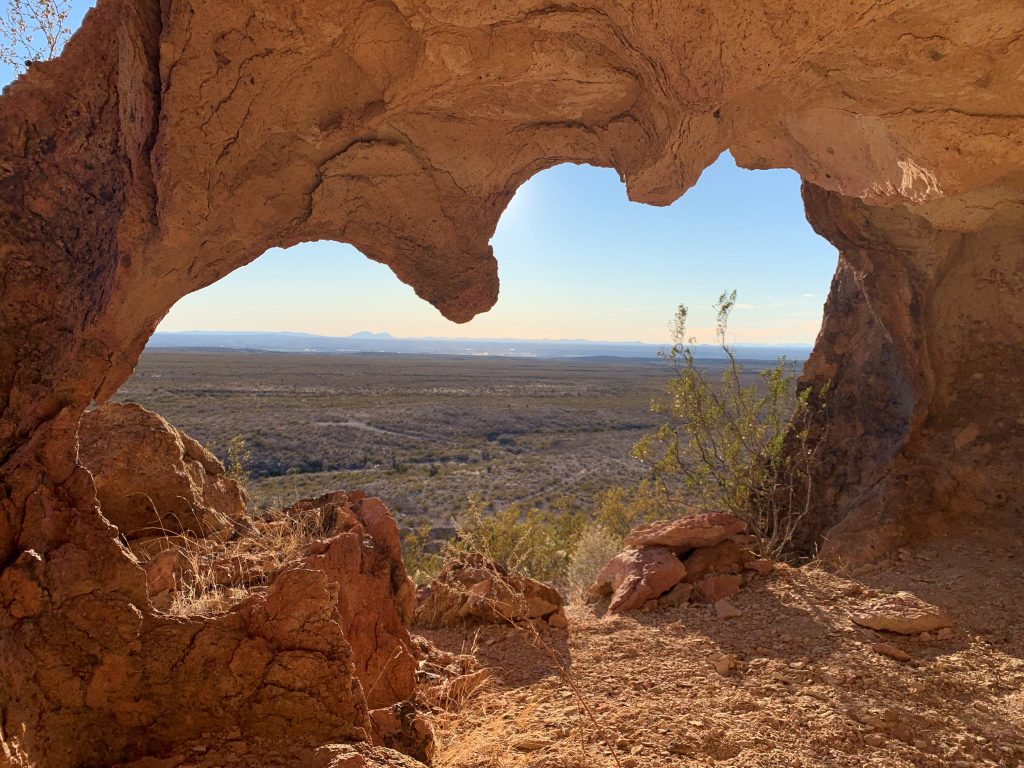
Adrian Hedden | Carlsbad Current-Argus
May 22, 2020
As New Mexico begins easing travel restrictions and stay-at-home orders implemented to combat the COVID-19 pandemic, hikers throughout the state began preparing to get back on the trails.
New Mexico is known for its miles and acres of outdoor recreation spaces from cultural locales in Chaco Canyon in the northwest, to the desert trails around Carlsbad Caverns in the southeast.
To help hikers get back out there, the New Mexico Wilderness Alliance released an online hiking guide, detailing more than 100 trails at 39 wilderness sites across the state.
Tisha Broska, deputy director at New Mexico Wild said now is the time for outdoor enthusiasts to begin planning their next adventure in the Land of Enchantment.
The guide included detailed descriptions of each trail, offering driving directions and information on the diverse ecosystems and natural features present in each area.
Hikers should still heed advice from Gov. Lujan Grisham and the Department of Health, read a New Mexico Wild news release, including maintaining social distancing by staying six feet apart from other parties.
“The past few months have been difficult on all of us. Using this online Hiking Guide to find new wild places to explore once it is safe to do so will help us all recover mentally,” Broska said. “We are happy to offer a resource at this time that will allow New Mexicans to learn more about our spectacular Wilderness areas and find a new favorite hiking trail.”
Here are some of the top trails listed in the guide for southern New Mexico.
Southeast New Mexico
Slaughter Canyon: The 11-mile hike through Slaughter Canyon winds through the back country on the Carlsbad Caverns wilderness area, providing scenic vistas of the area.
It was listed as a difficult, out-and-back trail best used for a day hike and getting moderate use.
Guano Road Trail:An easy, 3.4-mile hike tracks the historic route guano – or bat dung – miners used to haul the fertilizer from Carlsbad Cavern to White’s City.
It was described as lightly used and best for a day hike.
Rattlesnake Canyon Trail: The about 10-mile hike can be followed south to the boundary of Carlsbad Caverns National Park, for an out-and-back trip or can be taken north for a loop hike.
It was described as intermediate, getting moderate use for a day hike.
Juniper Ridge: This well-marked trail travels north to the park boundary and can be shortened to about 2 miles if hikers head back from the boundary. For the full 5-mile experience, hikers can continue along the fence line west to overlook Crooked Canyon.
Guadalupe Ridge: The Guadalupe Ridge Trail journeys through multiple areas in the backcountry, winding for a full 30 miles. The distance led to it being listed as an extremely difficult, multi-day hike, but provides a variety of views and environments of the Chihuahua Desert of southeast New Mexico.
Southwest New Mexico
Peña Blanca: About 3 miles of this hiking trail bring visitors up close to ancient remains, studying the culture and customs of some of the first New Mexicans in White Sands National Park.
Hikers are permitted to explore sites along the out-and-back trail but were asked to be respectful of the artifacts.
Lookout Peak: A difficult, 4.4-mile hike will take visitors to the top of Lookout Peak in the Organ Mountains Desert Peaks National Monument. Hikers must follow a winding road to get to the peak for a scenic day hike.
Baylor Pass: This 5.4-mile one-way hike takes hikers over the ridgeline to Aguirre Spring Campground for a longer climbing hike to the west, and shorter eastern leg for a better view of diverse plant life.
Chivatos Canyon:In the northern portion of Organ Mountains National Monument, this 7-mile hike uses a seldom-traveled road for more solitude which was once used as foot-and-horse-only road. The road crosses White Gap Draw, and into Chivatos Canyon up to 800 feet above the streambed.
Hikers can explore the canyon and volcanic rock formations along the way.
Cox Peak: An easy, 4-mile hike in the southern portion of the West Potrillo Mountains Wilderness Study Areas, this trail rises 1,700 feet to the peak which stands at almost 6,000 feet of elevation – the highest point in the area.
South Central New Mexico
Pierce Trail: Described as the most well-maintained trail in the Capitan Mountains, Pierce Trail extends about 11 miles for an out-and-back hike offering views of the Rio Bonito and Ruidoso watersheds, along with vistas of southeastern New Mexico’s plains.
Summit Trail: Winding along rocky terrain, the 15-mile hike gives visitors views of up to 17 other mountain ranges.
The length could make a day hike difficult, but it can be done and brings hikers to the top of Capitan Peak for a view of the Sierra Blanc Peak, one of New Mexico’s most prominent summits. Historic rock walls and treads line much of the trail.
Capitan Peak:A 10-mile round trip is steep but scenic, offering unique rock formations such as Chimney Rock and coming close to the 10,000-foot Capitan Peak, standing high above the central New Mexico plateau.
Three Rivers Trail: This 11-mile trail heads up Three Rivers Canyon, which contains a rare perennial stream cutting through rock formations and offering shade and campsites. At the stream’s drainage head, the trail’s switchbacks move steeply up a meadow on the western face of the mountain range and ends at a junction east of the 10,000-foot White Horse Hill.
This article originally appeared in the Carlsbad Current-Argus.
View all trails in the New Mexico Wild Hiking Guide at hike.nmwild.org.

